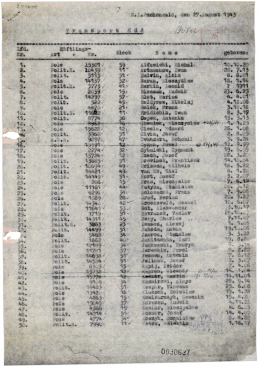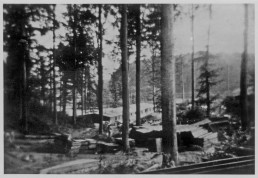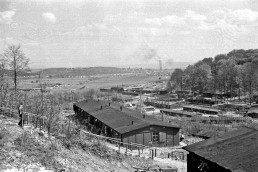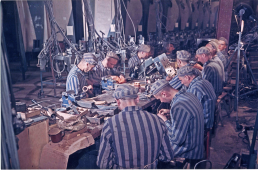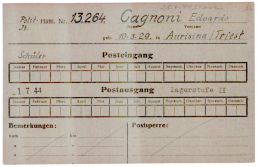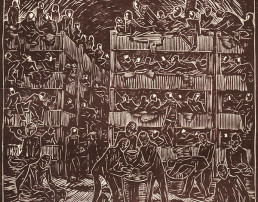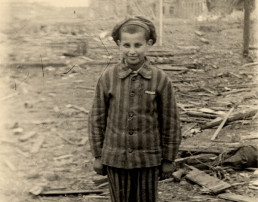From rocket plant to construction company: The Mittelbau-Dora Concentration Camp
After a British air raid on the Peenemünde Army Station, the Ministry of Armaments moved the assembly of A4/V2 rockets to a tunnel facility near Nordhausen. Concentration camp prisoners were to carry out both the expansion of the tunnels and the rocket assembly.
On 27 August 1943, the first prisoners from the Buchenwald Concentration Camp arrived at the Dora subcamp to build the armament plant. Beginning in the spring of 1944, the SS used them for other construction projects in the region. In the fall of 1944, the complex became an independent facility, the Mittelbau Concentration Camp. Dora was its main site.
One in three of the more than 60,000 prisoners lost their lives in the camp complex. Most died of hunger and disease, from work accidents and exhaustion. But executions were also part of the prisoners’ daily lives. On 11 April 1945, American troops liberated the Mittelbau-Dora Concentration Camp. They found catastrophic conditions and only a few survivors, including some children and young people.
First page of the transport list from Buchenwald to the Dora subcamp, 27 August 1943.
107 prisoners, including some adolescents, were on the first transport to the Dora subcamp. By Christmas 1943, further transports had increased the number of prisoners to over 10,000. Only a few of the prisoners were German. They were generally assigned to be prisoner functionaries, and had a more privileged status than their fellow prisoners, but they were also dependent on the favor of the SS. The greater part of the prisoners, most of whom were designated as political prisoners, were sent to Dora by the SS from the Soviet Union, Poland, France, and other occupied territories.
(Arolsen Archives)
View of the barracks under construction, summer 1944.
The actual camp at Dora did not yet exist when the prisoners arrived in the fall and winter of 1943/44. The prisoners were housed underground. By the summer of 1944, barracks had been built, housing an average of 15,000 people. A prisoner secretly photographed the construction of the camp.
(Mittelbau-Dora Memorial)
Fertigungshäftlinge (production prisoners) assembling control elements of V2 rockets, 1944.
After the underground rocket plant was completed, some of the prisoners were sent to work in the rocket assembly. Since this work required trained skilled workers, the SS used only a few young people here. The photo was commissioned by the Ministry of Armaments. Work in the concentration camp was to be portrayed as exemplary, any sign of misery was hidden.
(Photo: Walter Frentz, Mittelbau-Dora Memorial)
Buchenwald Concentration Camp record of incoming and outgoing mail for Edvardo Gagnoni, 1 July 1944.
The 15-year-old student from Aurisina near Trieste (Italy) was arrested by the German Security Police in his hometown on 15 June 1944, and shortly thereafter sent to the Buchenwald Concentration Camp as a political prisoner with the designation Lagerstufe 2 (stricter prison conditions). On 25 July 1944, the SS transferred him to the Ellrich-Juliushütte subcamp of the Mittelbau-Dora Concentration Camp. There he had to perform emaciating forced labor at underground construction sites and died on 18 November 1944.
(Arolsen Archives)
FURTHER INFORMATION:
Information on the subcamps of the Mittelbau-Dora Concentration Camp:
aussenlager.dora.de
Children in the Mittelbau-Dora Concentration Camp
Trapped underground:
The tunnel expansion
The first transports to leave Buchenwald for Mittelbau-Dora in the fall of 1943 included several young people. Almost all of them were political prisoners.
Transferred from Auschwitz to the Harz Mountains: Jewish, Sinti and Roma children
The evacuation of the "gypsy family camp" in Auschwitz-Birkenau began in April 1944.
